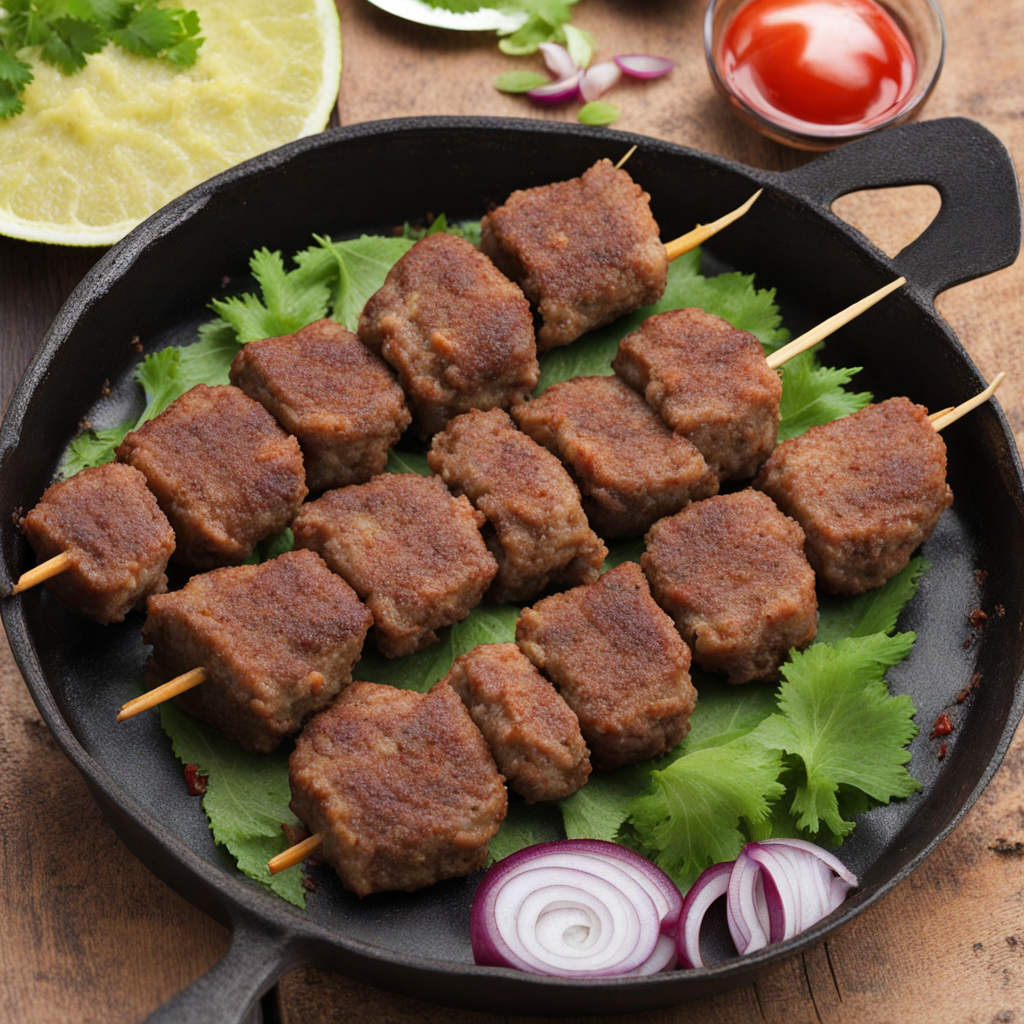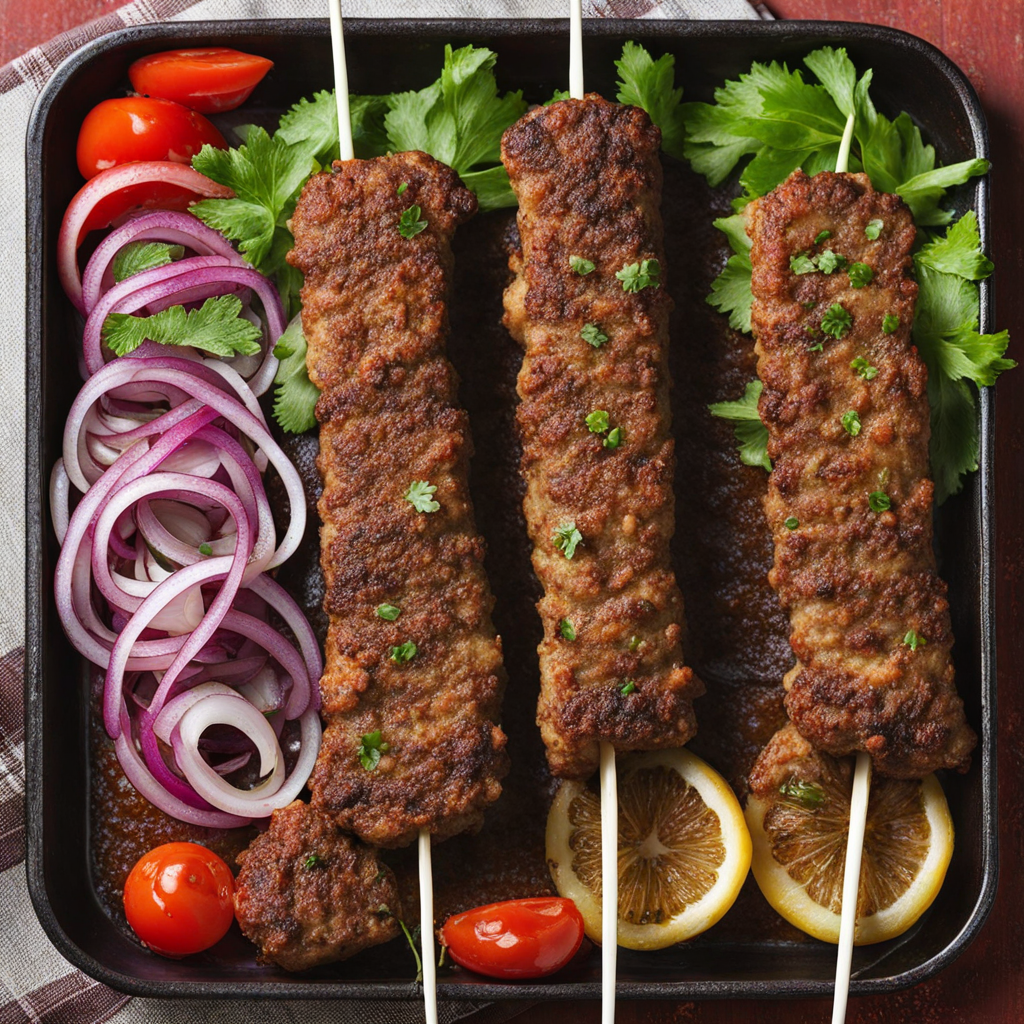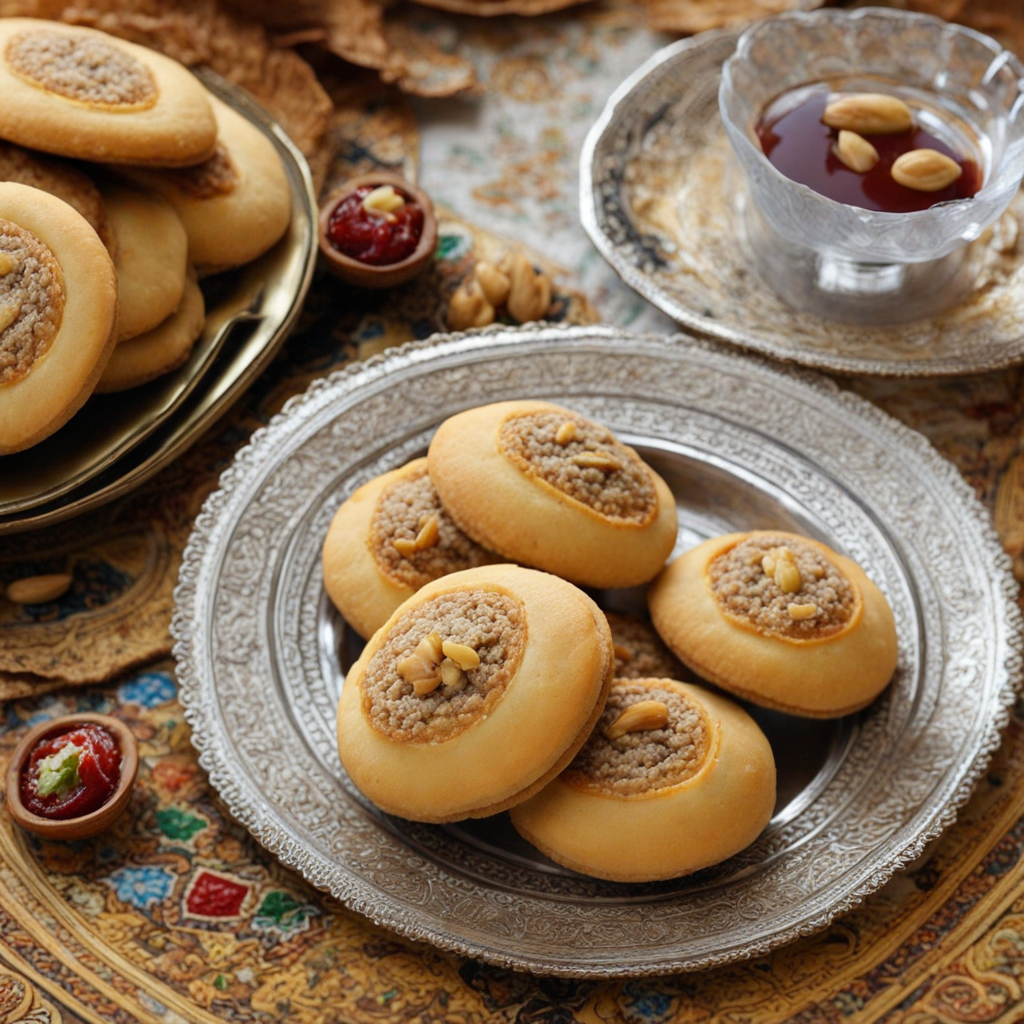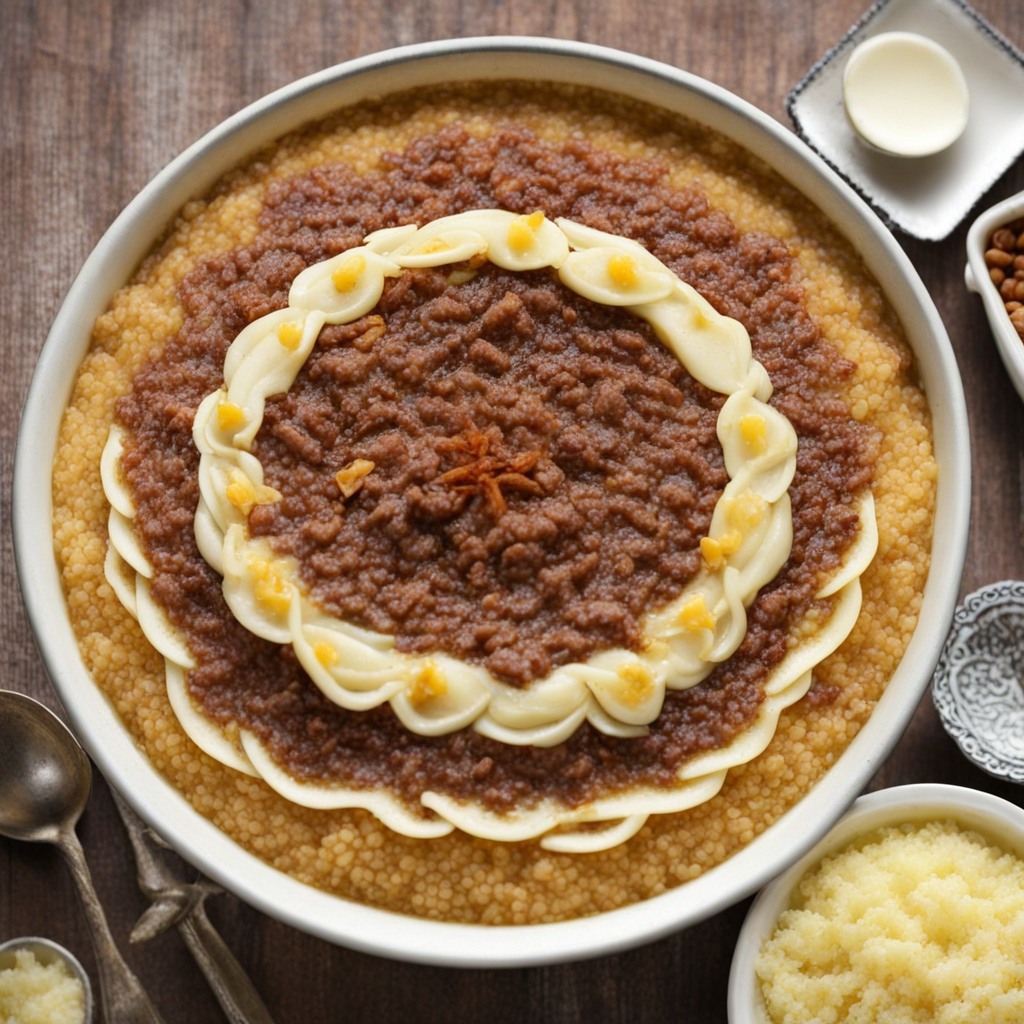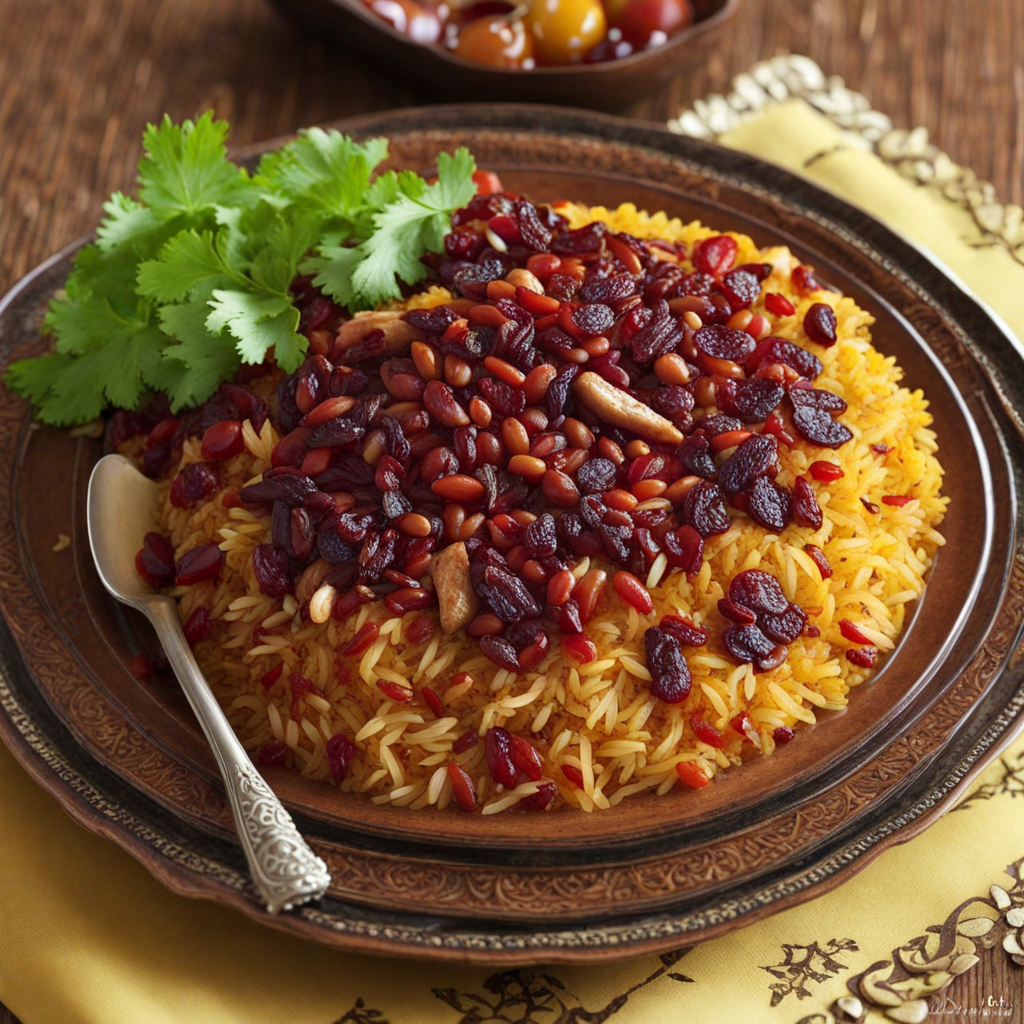Kabab Tabei
Kabab Tabehi, known as a quintessential Iranian dish, is a delightful pan-fried kebab that captures the essence of Iranian culinary traditions. Its roots can be traced back to the rich tapestry of Persian cuisine, where grilling meats over open flames has been a time-honored method. However, Kabab Tabehi offers a unique twist by utilizing a skillet or frying pan, making it accessible for home cooks who may not have access to traditional charcoal grills. This dish embodies the adaptability of Persian cooking, allowing it to flourish in both urban and rural settings. The flavor profile of Kabab Tabehi is a harmonious blend of spices and ingredients that reflect the aromatic nature of Iranian cuisine. The meat, typically lamb or beef, is marinated with a mixture of onions, saffron, and a variety of spices, including turmeric and black pepper. This marinade not only tenderizes the meat but also infuses it with a rich, savory flavor. When cooked, the kebabs develop a slightly crispy exterior while remaining juicy and flavorful on the inside. The addition of grilled tomatoes as a side enhances the dish, providing a burst of acidity that balances the richness of the meat. Preparation of Kabab Tabehi is straightforward yet requires attention to detail to achieve the perfect texture and flavor. The process begins with finely chopping onions and mixing them with ground meat, saffron, and spices. This mixture is then shaped into elongated patties or skewers, which are typically around the size of a
How It Became This Dish
Origins of کباب تابهای کباب تابهای, or "pan kebab," is a beloved dish in Iranian cuisine that has its roots deeply embedded in the culinary traditions of Persia. The dish is characterized by its simplicity and the use of readily available ingredients, making it a popular choice among families and home cooks. The origins of کباب تابهای can be traced back to the nomadic tribes of Iran, who have long been known for their grilling techniques and flavorful meat dishes. Historically, kebabs were prepared over open flames, often using skewers. However, the adaptation of cooking kebabs in a pan likely emerged as a practical solution for urban dwellers, where open fires were less feasible. This method allowed for a more controlled cooking environment and made it easier to prepare kebabs in a home kitchen, thus widening its appeal. The dish also reflects the Iranian ethos of using minimal ingredients to create rich flavors, showcasing the country’s culinary ingenuity. \n\n Cultural Significance In Iranian culture, food is not just sustenance but a way to connect with family and friends. کباب تابهای embodies this ethos, often served during gatherings, celebrations, and family meals. It is a dish that transcends social classes, enjoyed by both the affluent and the less fortunate. The communal aspect of dining is emphasized in Iranian culture, and کباب تابهای is frequently accompanied by rice, bread, and a variety of fresh herbs and vegetables, enhancing the experience of sharing a meal. The dish also holds a special place in the heart of Iranian traditions. It is often prepared during significant festivities and events, such as weddings and religious celebrations. The act of cooking کباب تابهای together can strengthen bonds among family members, allowing for the sharing of stories and laughter as they gather around the stove. This communal cooking experience adds an emotional layer to the dish, making it a symbol of unity and togetherness. \n\n Ingredients and Preparation The ingredients for کباب تابهای are straightforward, typically consisting of ground meat (usually lamb or beef), onions, spices, and sometimes grated vegetables. The simplicity of the ingredients does not diminish the flavor; instead, it highlights the quality of the meat and the skill of the cook. The meat is often marinated with a blend of spices, including turmeric, salt, and pepper, which not only enhances the flavor but also contributes to the vivid coloration of the dish. Preparation of کباب تابهای involves shaping the marinated meat mixture into flat patties or kebabs, which are then cooked in a hot, lightly oiled pan. The pan-frying method allows for a crispy exterior while keeping the inside moist and tender. Some variations may include the addition of vegetables like tomatoes or bell peppers cooked alongside the kebabs, adding layers of flavor and nutrition to the dish. \n\n Regional Variations As with many traditional dishes, کباب تابهای has various regional interpretations across Iran, reflecting the diverse culinary practices of the country. In northern regions, such as Gilan, the dish may incorporate local herbs and spices unique to the area, while in southern regions, the use of different types of meat and marinades may be more prevalent. In Tehran, کباب تابهای is often served with saffron-infused rice, while in the provinces, it might be accompanied by bread and more robust side dishes. Each region’s take on کباب تابهای adds to the richness of Iranian cuisine, showcasing the adaptability and creativity of Iranian cooks throughout history. \n\n Modern Adaptations In contemporary Iran, کباب تابهای continues to evolve while retaining its traditional roots. With the rise of urbanization and changing lifestyles, many young Iranians are rediscovering their culinary heritage through modern cooking methods and presentations. The dish has also gained popularity outside of Iran, finding its way into international menus in Persian restaurants across the globe. Furthermore, the growing interest in healthy eating has led to adaptations of کباب تابهای, such as using lean meats, incorporating more vegetables, or serving it with healthier sides. Vegetarian versions, made with legumes or plant-based proteins, have also emerged, catering to a wider audience while still paying homage to the original dish. \n\n Global Influence The international culinary scene has embraced کباب تابهای as part of the broader fascination with Middle Eastern cuisine. As global travel has increased, so has the exposure to diverse food cultures, allowing dishes like کباب تابهای to cross borders. Food enthusiasts around the world are drawn to its rich flavors and the social experience it promotes, leading to a growing demand for authentic Persian cuisine. Social media platforms have played a significant role in the global spread of کباب تابهای, with food bloggers and chefs sharing recipes and videos that showcase the dish's preparation. This digital engagement has led to a renewed interest in traditional cooking methods, encouraging a younger generation to appreciate and recreate their cultural heritage. \n\n Conclusion In conclusion, کباب تابهای is more than just a delicious dish; it is a reflection of Iranian culture, history, and community. Its origins in the nomadic traditions of Persia, coupled with its evolution into a beloved home-cooked meal, illustrate the adaptability and resilience of Iranian cuisine. As it continues to gain popularity both within Iran and internationally, کباب تابهای remains a symbol of unity, flavor, and the enduring power of food to bring people together.
You may like
Discover local flavors from Iran


